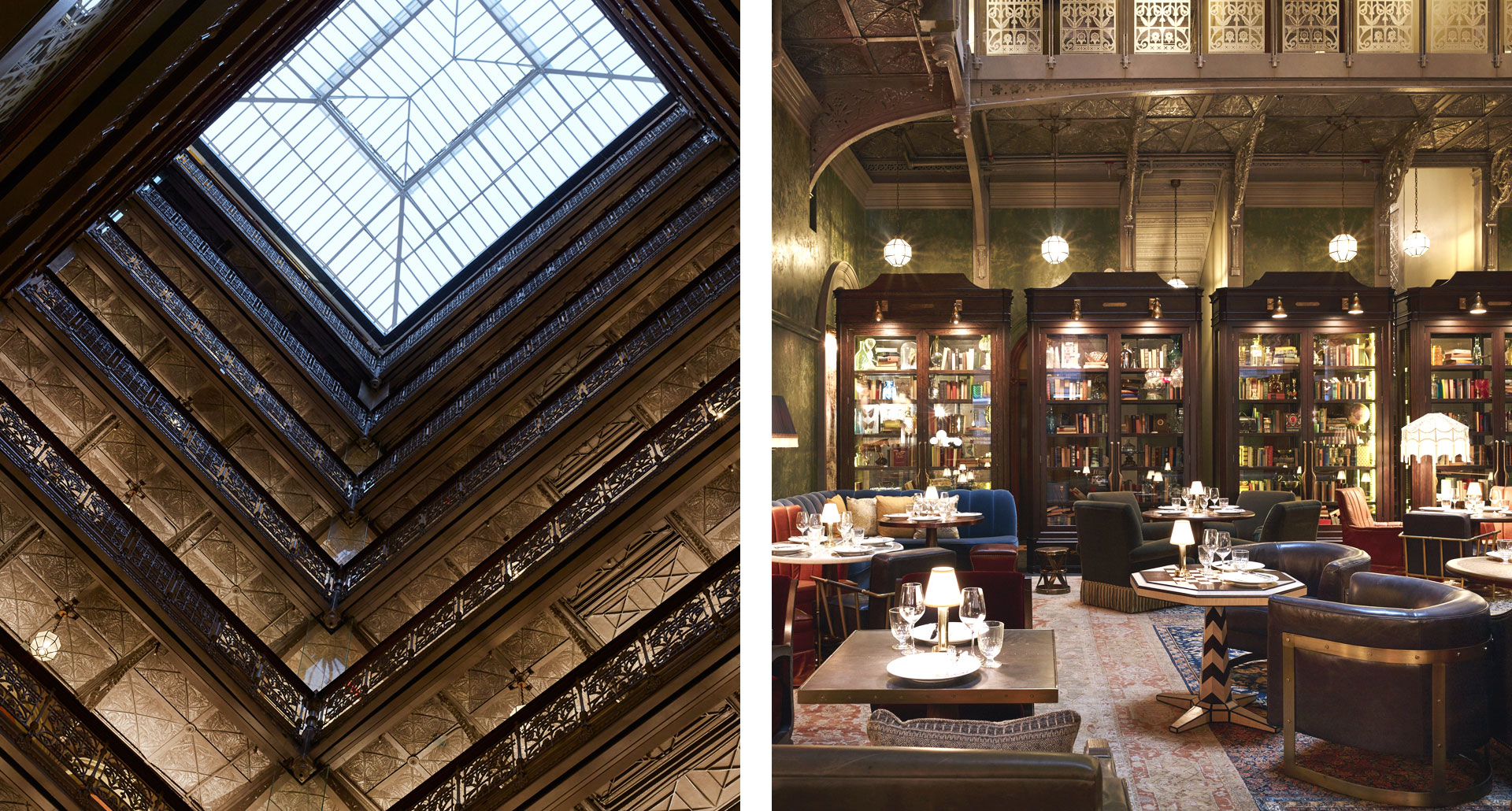If you focus only on visual style, you might miss out on the fact that the biggest change to hit the world of hotels has been a conceptual one. The best boutique hotels these days are social spaces.
When we launched Tablet, the prevailing trends that we needed to keep track of were mostly matters of competing design styles — austere, minimalist modernism vs. Philippe Starck theatrics, futuristic blobby forms vs. neo-Baroque ornamentation. Today’s boutique hotels, by contrast, have entered a backward-looking phase in their visual evolution, drawing on any number of historical influences to borrow some of the comfort of familiarity and some of the weight of history.
But if you stay focused on visual style, you might miss out on the fact that the biggest change to hit the world of hotels has been a conceptual one. The best hotels these days are social spaces, open to their environments to an extraordinary degree. While the boutique hotel “social life” used to pride itself on its exclusivity — to the point where paying guests could find it difficult to talk their way past the doorman — today’s hotels strive to offer an authentic reflection of their local community.
It’s easier than ever to live like a local.
This can mean a lot of different things, and there are as many interpretations as there are hotels themselves. But a restaurant by a chef who cooks in the neighborhood, a bar by a local bartender, a café serving coffee from a local roaster — these are all great places to start. No longer is a boutique hotel about imposing a top-down vision of what’s cool somewhere else, or re-creating a uniform concept across a chain of disparate locations. The most successful hotels, even if they’re chains, are dedicated to tailoring themselves to each location — the Ace hotels, for example, aren’t about projecting a ’90s Seattle vibe on London and New Orleans, but instead strive to bring out the best of what’s long been brewing in Shoreditch or the Warehouse District.

The Chicago Athletic Association, for example, used to be exactly what it sounds like, and when designers Roman and Williams reconstructed it they kept a healthy dose of the history, but tailored it not only to today’s young travelers, but to the young Chicagoans who are here for the nightlife (and the city’s second Shake Shack). Meanwhile the Beekman‘s vast atrium is the meeting point downtown Manhattan always needed, and its restaurants and bars, by local lights Tom Colicchio and Keith McNally, are an authentic taste of New York’s culinary culture.

Exclusivity is no longer a selling point.
Of course, hotels involving themselves in the social life of the city isn’t new. But we’re not talking about lords and ladies dining at the Savoy. At the Zetta in San Francisco you could be playing Plinko on the big board with a college kid or a tech CEO. It’s about accessibility, not exclusivity — instead of watching Woody Allen sit in with the jazz band at the Carlyle, you could be playing board games with Coachella-bound rockers in the Amigo Room at the Ace in Palm Springs.

And in a hotel like Hotel Emma, in San Antonio, Texas, it’s not always entirely clear where the hotel ends and the neighborhood begins. In this case, that’s a good thing, because the “neighborhood,” Pearl, is a riverside redevelopment of a historic brewery, now divided into hundreds of apartments and more than a dozen restaurants and cafés, as well as shops, offices, and (lest we forget) the hotel itself. With that kind of integration, the distinction between a hotel restaurant and a neighborhood restaurant just about disappears.

Hotels and the sharing economy.
The apartment-sharing trend, for what it’s worth, is based on a similar affinity for the hyper-local, and a desire to live like an ordinary local rather than a coddled tourist. And in some ways, these “inside-out” boutique hotels are an answer to the apartment shares, or at least they’re motivated by the same desire among travelers. You get a certain feel for the flavor of, say, Williamsburg by borrowing someone’s fourth-floor walkup, but you’re no less immersed in the neighborhood at the William Vale — and you’ve got professional hosts and 24-hour staff to ensure that everything goes smoothly.

A good hotel is an experience, not a transaction.
What it all comes down to is that more and more travelers are discovering for themselves what we’ve been saying all along — that it’s about personality, about character, about experiences that are worth remembering. And the key to all of it is to get specific. Today’s hotel guests don’t just pick a hotel in New York City, they weigh Midtown vs. SoHo vs. Williamsburg vs. Wall Street, and they know each choice will lead to a vastly different experience. While this has something to do with the location in impersonal terms — accessibility, transportation, the local sights and sounds — it’s got more to do with the people you’re sharing your neighborhood with, and the best hotels ensure that you’re a part of their community for as long as you want to stay.

